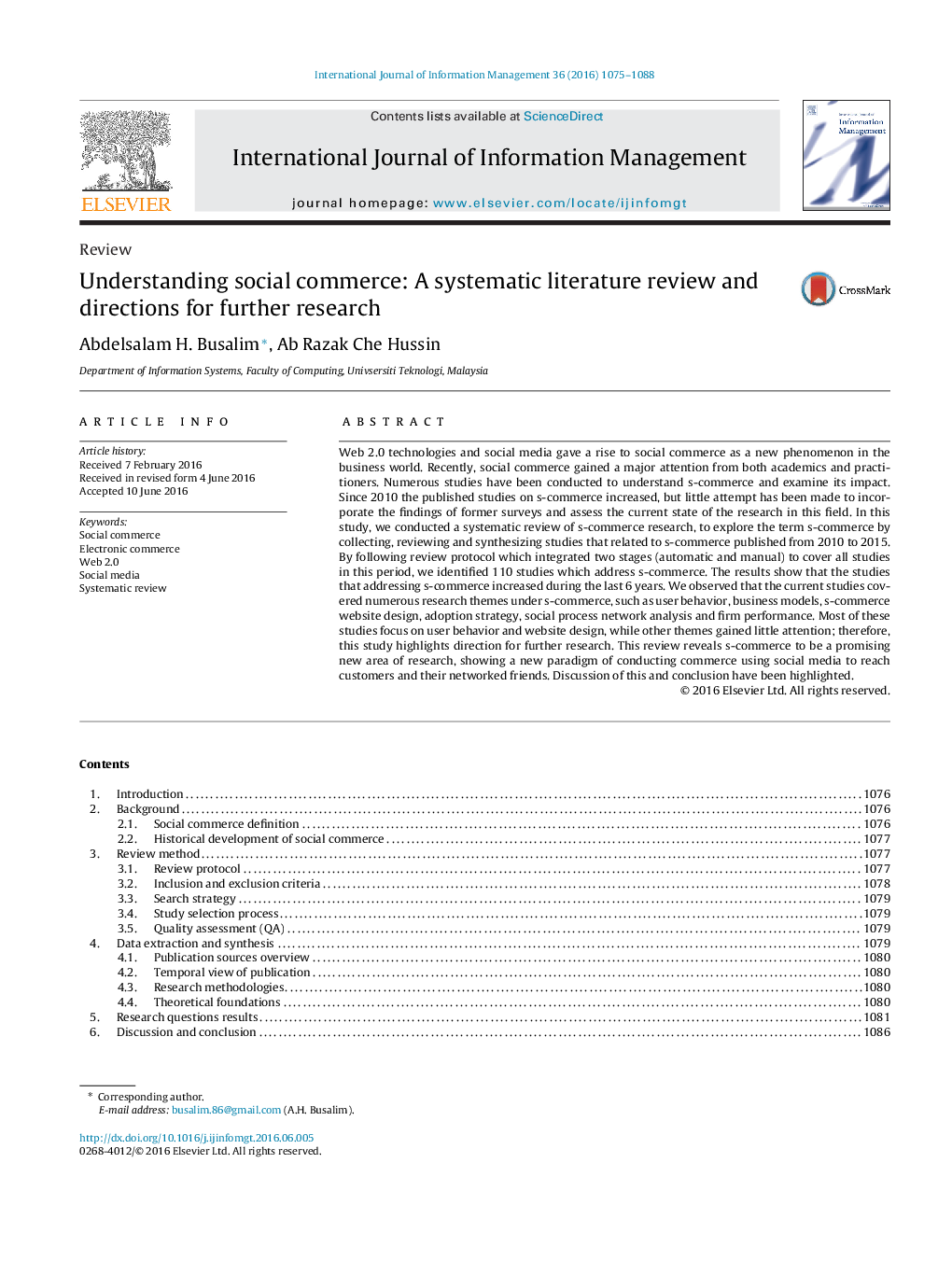| Article ID | Journal | Published Year | Pages | File Type |
|---|---|---|---|---|
| 1025475 | International Journal of Information Management | 2016 | 14 Pages |
•A total 110 studies reviewed to clarify social commerce concept using per-defined review protocol.•We identify three main characteristics of social commerce that distinguish the term from e-commerce.•We highlighted the research themes that have been addressed in previous studies.•The results of the review highlighted the limitation and the gaps in the previous studies in three main aspects (theoretical, customer and design aspects).
Web 2.0 technologies and social media gave a rise to social commerce as a new phenomenon in the business world. Recently, social commerce gained a major attention from both academics and practitioners. Numerous studies have been conducted to understand s-commerce and examine its impact. Since 2010 the published studies on s-commerce increased, but little attempt has been made to incorporate the findings of former surveys and assess the current state of the research in this field. In this study, we conducted a systematic review of s-commerce research, to explore the term s-commerce by collecting, reviewing and synthesizing studies that related to s-commerce published from 2010 to 2015. By following review protocol which integrated two stages (automatic and manual) to cover all studies in this period, we identified 110 studies which address s-commerce. The results show that the studies that addressing s-commerce increased during the last 6 years. We observed that the current studies covered numerous research themes under s-commerce, such as user behavior, business models, s-commerce website design, adoption strategy, social process network analysis and firm performance. Most of these studies focus on user behavior and website design, while other themes gained little attention; therefore, this study highlights direction for further research. This review reveals s-commerce to be a promising new area of research, showing a new paradigm of conducting commerce using social media to reach customers and their networked friends. Discussion of this and conclusion have been highlighted.
